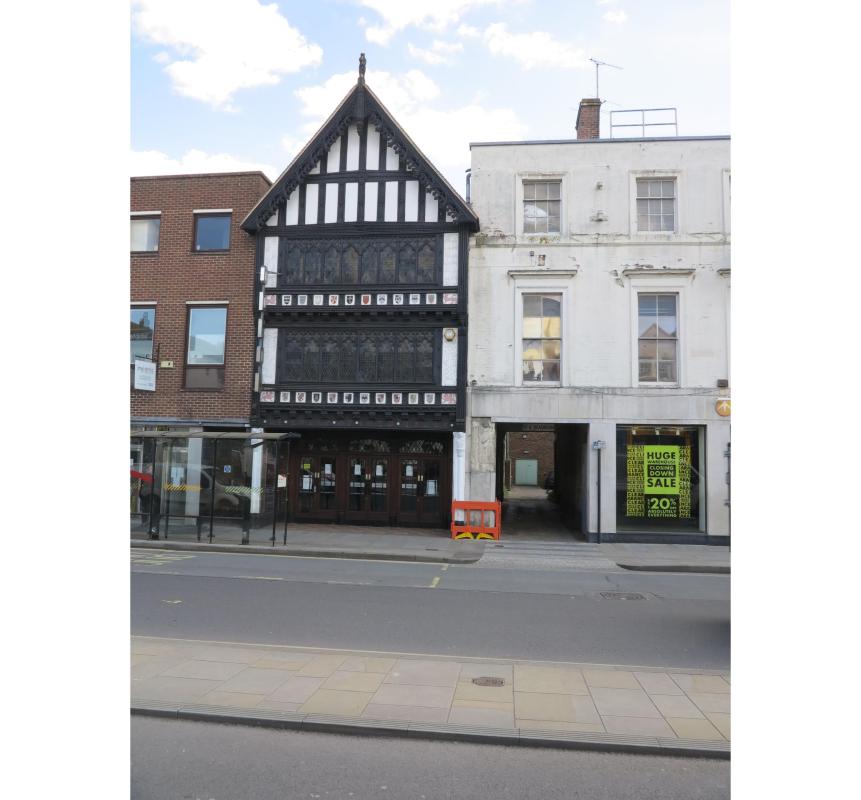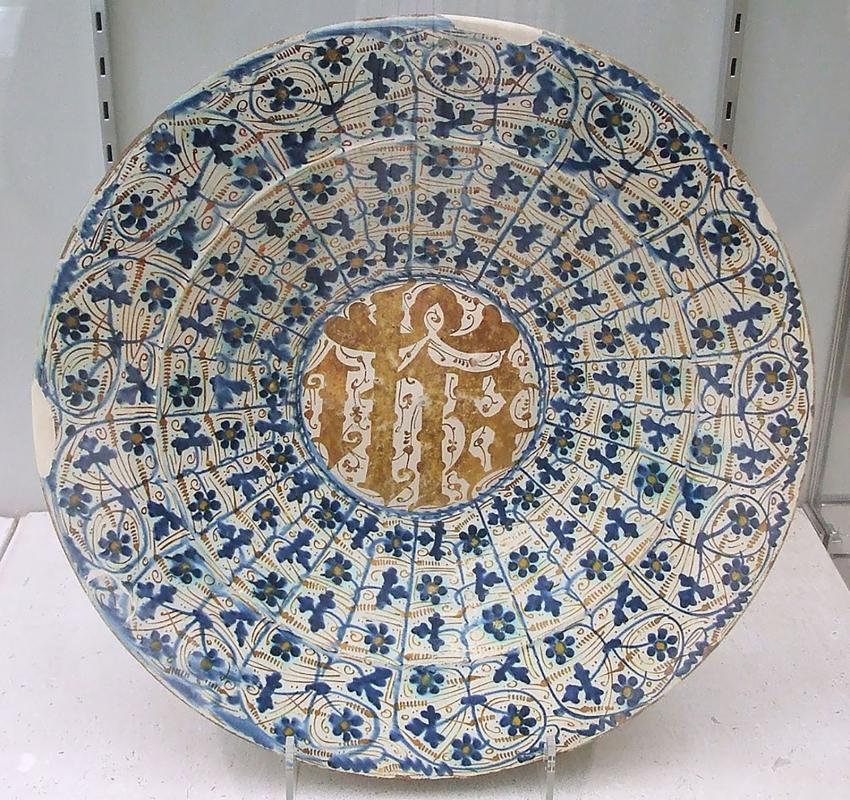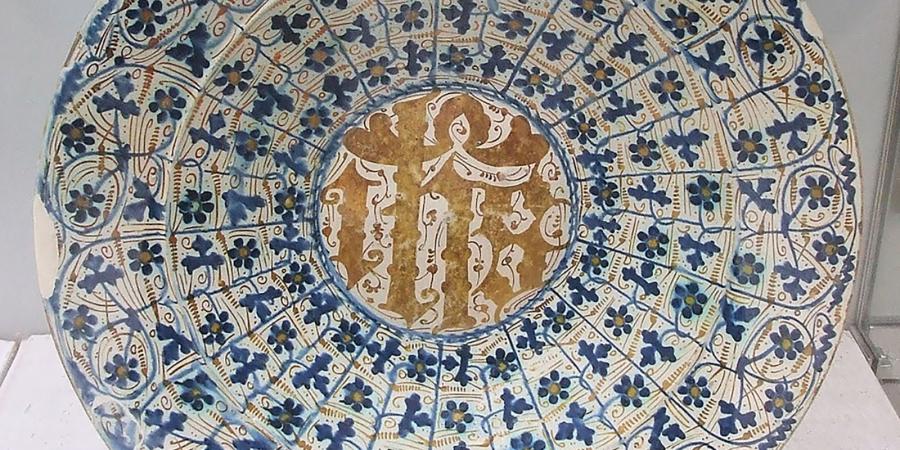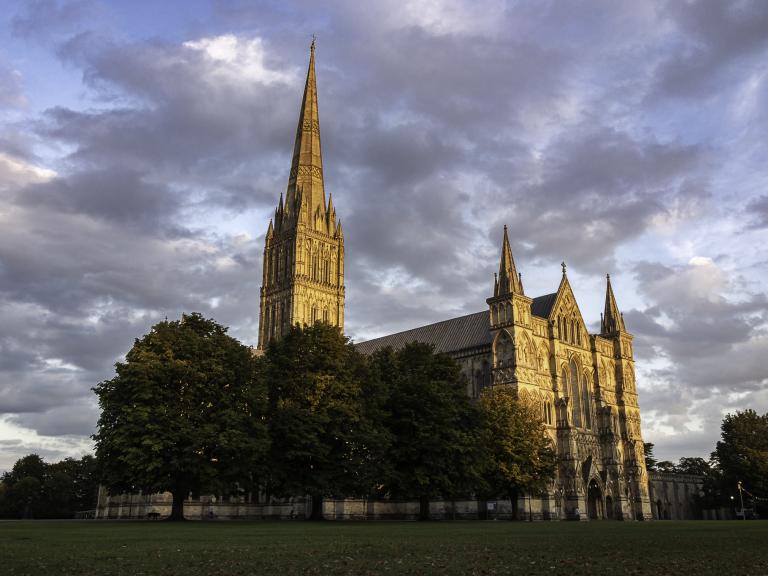The tour across Salisbury’s hidden archaeological landscape now moves to the New Street Chequer, where New Canal formed the south side of the Market Place, the hub of the commercial life in medieval Salisbury.
An opportunity to excavate two trenches, A and B, arose in December 1989 and January 1990 when extensions were made to Marks and Spencer store. Working conditions for the archaeologists were hampered by the pace of the ongoing development; archaeological considerations were not included in the planning consent, as they are now, which limited the time and access to excavate and record the work appropriately. Part of Trench A was dug in a conventional manner, by layers, but the remainder was excavated in three trial slots with features recorded in the sections. This two-dimensional approach severely limited the value of the work, making it especially difficult to define the surface outline of the features, which were predominantly pits. Trench B was cleaned and planned, but, due to the pressure of time, was abandoned.
The excavated areas were situated within the ‘back-lands’ of properties which fronted onto New Canal. The tenement adjoined the 15th century residence of John Halle, one of Salisbury’s wealthiest and most notorious medieval merchants, who has been described by John Chandler, a local historian, as ‘a hot-headed, fearless autocrat, a foul-mouthed and cantankerous’ individual who nonetheless dared to challenge the authority of the bishop by campaigning to increase civic powers within the city. The show of wealth that reflects this colourful character’s status can still be enjoyed; the main hall of his house now forms the entrance hall of the Odeon cinema.

John Halle's house on New Canal in Salisbury, built in the 15th century; the main hall, which lies behind this later facade, now forms the entrance hall of the Odeon cinema
The house was constructed of stone, at right angles to New Canal, and was approached through an archway into an open courtyard; an alley to the rear, allowed access to the ‘back-lands’. Halle undoubtedly shared the street with other high-status residents. Traces of neighbouring houses have been lost, nevertheless their grandeur can be gauged from Naish’s map of 1716. This survey employed considerable artistic licence but manages to convey that most buildings along New Canal, like Halle’s residence, probably extended back from the street frontage, around enclosed courtyards. In contrast, houses on the south side of the chequer, lining New Street, which we will visit next week, contained fewer residences which extended back from the street frontage.
The sequence in Trench A commenced with an undated chalk and mortar wall foundation, which formed an unspecified ‘U’ shaped feature. This was succeeded by a pair of walls, 1.80 m apart, which formed a tenement alleyway and ran from N-S between adjoining tenements along the entire length of the excavation.
The transient nature of tenement boundaries can be seen by the fact that a number of large pits were subsequently cut through the alleyway. These pits were predominantly recorded in the trench section, which made it difficult to reconstruct the sequence in which they were dug and limited the certainty with which finds could be allocated to specific features. The pits included a distinct intercutting concentration towards the southern boundary of the tenement. Large pits of this density are rare in Salisbury although not unique; we saw how similar concentrations of intercutting late medieval/early post medieval pits were similarly located at the far end of a tenement in Vanner’s Chequer, between Bedwin Street and Salt Lane.
The tenement boundary was subsequently re-established and marked by the construction of a flint wall with a curving extension.
Looking towards the site of the New Canal excavations in 2020; the flint wall on the left is the wall of John Halle's house
The excavation identified additional pits which were separated from the earlier examples by layers of demolition rubble. These later pits included a square, chalk-lined example which was also at the south end of the site and adjacent to two other chalk-lined walls. The pit was only partially excavated due to its location and depth; however, the description of these conjoining square chalk-lined features is reminiscent of the description that we have come to recognise as cesspits elsewhere in Salisbury. Sadly, the excavation did not reach and sample the basal contents to see if they reflected the by-products of an affluent lifestyle. Despite the limitations of the excavation the finds assemblages were especially significant. They included refuse which potentially reflects the lifestyle of those with wealth. It is possible that some of the finds may even have been linked to the great man, John Halle, himself. One of these was a bowl, of which only one small sherd survived, which proved to be a rather exotic import – a Spanish lustreware with delicately painted foliage motifs. This elaborate, luxurious pottery was produced in the 15th century and is the sort of object that could have been appeared on Halle’s table, made available through his extensive trading activities.

An example of lustreware from the Burrell Collection, similar in style to the slightly less ornate sherd discovered at the New Canal site (image courtesy of Marshall Colman)
Other ceramic imports, of slightly later date (late 15th to early 16th century) were found in the form of German stoneware beer mugs. Records in the Southampton Port Books refer to several hundred of these mugs entering the port and being transported to Salisbury in 1527, presumably to fulfil the needs of thankful, thirsty residents!

